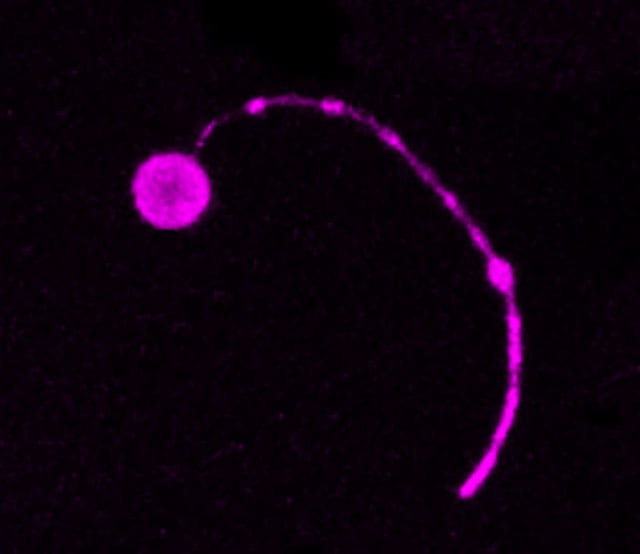The Ghose Lab
Part of the Department of Biology at The University of Texas at Arlington
The Ghose Lab studies Compartmentalized Cell Elimination (CCE) in the living animal

About the lab:
It’s counter-intuitive, but cell death is an essential part of a healthy, normal life. For example, in the brain, half of the neurons we are born with are programmed to die during development. Cell death is also necessary to maintain proper cell number. Importantly, once the cells have died, the remains of dying or dead cells must be cleared away to prevent autoimmunity.
How does the shape of a cell impact the process of programmed cell death? Many of our cells, such as those in the nervous system and certain skin cells, can have complex structures with long protrusions. The result is a cell that has distinct compartments that are very different from another in terms of their architecture and surroundings. Such complex cells often die, such as during brain development. While programmed cell death in general has been extensively studied, we really don’t know about how the intricate structure of a cell impacts how it dies and how its remains are removed.
The Ghose lab studies the programmed death and clearance of cells of complex structure in the living animal.
We ask
- How do cells with complicated structures, like neurons, die?
- How are different compartments of a dying cell removed? Are the mechanisms specific to different compartments?
- More broadly, how do the very different and distant parts of a complex cell communicate with each other in the context of programmed cell death?
Our approaches
We study these questions in the nematode Caenorhabditis elegans using a combination of genetics and cell biology. We employ:
- In vivo imaging
- CRISPR and Transgenesis
- Classical genetics
- Forward genetics
Why we use C. elegans
- It reproduces fast, with a life cycle of only about 3 days.
- We can definitively predict which cells die and when they will die.
- It is genetically tractable.
- It’s body is transparent: we can visualize cell death in progress in the living animal!
The tail-spike cell
We are focusing on a specific cell in the nematode called the tail-spike cell. The tail-spike cell is a structurally complex cell that extends a long process that acts as a scaffold for the developing tail. Once the tail is formed, the cell dies in the embryo in a remarkable and surprisingly elaborate way. We are studying tail-spike cell death with the hope of learning more about the cell biology and genetics behind neurodegeneration, cancer and basic developmental cell death.
Funding
The Ghose lab is funded by a Cancer Prevention Research Institute of Texas (CPRIT) Recruitment Award (RR100091) and a National Institutes of Health-National Institute of General Medical Sciences Maximizing Investigators’ Research Award (MIRA)/Outstanding Investigator Award (R35GM142489) to PG.